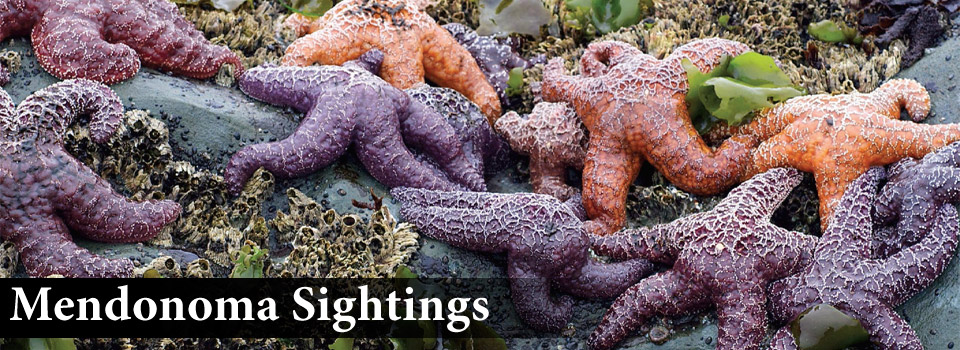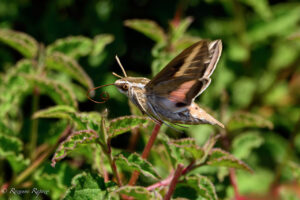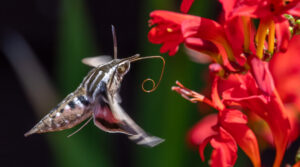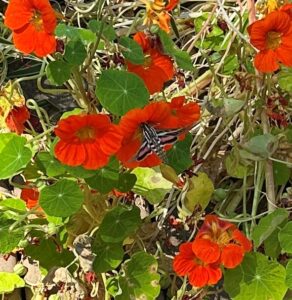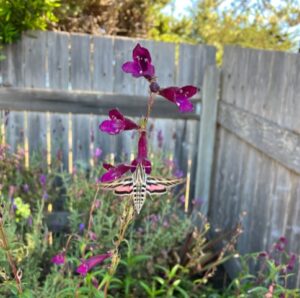So many people have told me they have never seen one before, but this summer there are hundreds upon hundreds here on the Mendonoma Coast. Others have told me they are seeing them in other parts of the country. Are they having a mast year? What are the consequences of so many of these moths in a relatively small area? Their caterpillars are voracious eaters, I've read. But the beautiful moths are pollinators of various flowers. Rozanne Rapozo photographed one in her garden.
Paul Brewer also had these moths visit his garden in Gualala. You can see the very loooong tongue these moths have to reach down into flowers. They are feeding on nectar and they get pollen on their faces. Then when they go to another flowers, they pollinate it with the pollen on their faces. Win/win!
Thanks to Rozanne and Paul for allowing me to share their photos with you here.
Foggy and more fog. No wind and the temps are mild. We may get a little rain from the hurricane (!) to the south. That's forecast for tomorrow.
